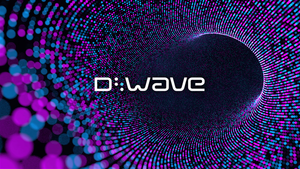Financial News
Short Sellers Amp Up Bets Against S&P 500 Tech Giants Amidst Market Volatility

Short sellers are significantly increasing their wagers against S&P 500 technology stocks, signaling a growing wave of skepticism within the financial markets. This bearish sentiment comes despite a year of robust growth for the technology sector, creating a complex and potentially volatile landscape for investors as of October 14, 2025. The amplified short interest points to underlying concerns about valuations, macroeconomic headwinds, and sector-specific challenges, even as the broader S&P 500 Information Technology sector has outperformed the benchmark index.
This rising tide of short positions could herald increased market volatility and a re-evaluation of tech stock valuations. While it reflects a belief among some investors that certain tech companies are overvalued, it also sets the stage for potential short squeezes if these heavily shorted stocks defy expectations and rally. The interplay between bearish bets and the sector's inherent resilience will likely define the coming months for technology investors.
A Deep Dive into the Bearish Onslaught on Tech
The recent surge in short interest within the S&P 500 technology sector is a clear indicator of shifting market dynamics. The average short interest in the information technology sector climbed to 1.76% in September 2025, a noticeable increase from 1.63% in August. This follows a period where the technology sector has consistently been a prime target for shorting activity for at least three consecutive months leading up to February 2025, as highlighted by the Hazeltree Shortside Crowdedness Report. The IT Services industry bore the brunt of this bearish attention in September, recording the highest short interest at 3.22%, up from 3.00% in August, closely followed by Electronic Manufacturing Services at 2.63%.
Several prominent technology companies have become particular focal points for short sellers. Super Micro Computer (NASDAQ: SMCI) stands out with 18.14% of its shares sold short in September, a figure that, while marginally down from August's 18.61%, underscores persistent investor caution. Earlier in February 2025, Super Micro Computer was also identified as the second-most crowded large-cap stock for shorting, reflecting deep-seated concerns about its growth trajectory. Other significant targets include Western Digital (NASDAQ: WDC) and AppLovin (NASDAQ: APP), which recorded short interests of 10.73% and 9.78% respectively in September. In stark contrast, tech giants like Microsoft (NASDAQ: MSFT) and Apple (NASDAQ: AAPL) remained among the least shorted, with short interests of 0.75% each, suggesting continued confidence in their stability and long-term prospects.
This amplified bearish sentiment isn't confined solely to the S&P 500 tech sector. The broader Nasdaq market has also experienced a considerable increase in short interest, with 16.93 billion shares shorted as of August 15, 2025, representing a 2% rise from late July. This widespread increase in short positions across the tech-heavy index suggests a broader amplification of bearish bets amidst prevailing macroeconomic uncertainties and sector-specific volatility. The timing of this increased shorting activity aligns with a significant sell-off in U.S. stock indexes last week, particularly impacting technology stocks, which saw approximately $2 trillion wiped off their market value due to escalating U.S.-China trade tensions. This recent market turbulence underscores the fragility of equity markets, especially tech, at their current valuations.
The immediate implications are multifaceted. While short selling can exert downward pressure on stock prices, high short interest can also be a double-edged sword, potentially triggering short squeezes if positive news or market shifts force short sellers to cover their positions, thereby fueling rapid price increases. Some market strategists have even suggested that aggressive upward momentum observed in certain stocks prior to recent pullbacks might have been indicative of such short squeezes and "fear of missing out" (FOMO) buying. This dynamic creates a volatile environment where rapid price swings, both up and down, are increasingly likely.
Navigating the Winners and Losers in a Short-Sellers' Market
The intensified short selling within the S&P 500 technology sector creates a clear delineation between companies that face significant headwinds and those that might demonstrate resilience or even capitalize on market dynamics. Highly shorted companies are squarely in the crosshairs, facing potential valuation declines if the bearish outlook of short sellers proves accurate.
At the forefront of the highly shorted list are companies like Super Micro Computer (NASDAQ: SMCI), which consistently ranks among the most shorted in the S&P 500 IT sector with 18.14% short interest in September. Despite strong AI-driven demand that has propelled its shares higher year-to-date, the persistent high short interest signals deep market skepticism about the sustainability of its growth trajectory. Similarly, Western Digital (NASDAQ: WDC) and AppLovin (NASDAQ: APP) also exhibit significant short interest, with 10.73% and 9.78% respectively. For these companies, sustained short selling pressure can depress stock prices, making it more challenging and expensive to raise capital through equity offerings, as issuing new shares would dilute existing shareholders more significantly. A continuously high short interest can also foster a perception of fundamental weakness, deterring potential investors and partners.
Conversely, technology giants with low short interest tend to be more insulated from this bearish pressure. Microsoft (NASDAQ: MSFT) and Apple (NASDAQ: AAPL), for instance, were among the least shorted stocks in the S&P 500 IT sector in September, each with a short interest of just 0.75%. Amphenol (NYSE: APH) and NVIDIA (NASDAQ: NVDA) also maintain relatively low short interest. These companies are generally perceived as having stronger market confidence, making them more resilient to downward pressures and less susceptible to the negative feedback loop that can accompany heavy shorting. While a short squeeze typically impacts highly shorted stocks, these less-shorted companies are better positioned to weather broader market volatility without the added burden of forced selling by short covering.
Ultimately, the impact on stock performance for highly shorted companies can be severe if short sellers are correct, leading to significant price declines. However, the very presence of high short interest can also set the stage for dramatic short squeezes if a strong positive catalyst emerges, forcing short sellers to buy back shares and driving prices rapidly upward. This dynamic highlights the inherent risks for both long and short positions in the current tech market, where investor sentiment and access to capital are increasingly influenced by the battle between bullish growth narratives and bearish valuation concerns.
Broader Implications and Historical Echoes
The escalating short interest in S&P 500 technology stocks is more than just a battle over individual company valuations; it reflects and contributes to broader industry trends, creates ripple effects, and has attracted regulatory attention, all while echoing historical market events. This trend suggests a nuanced market outlook where, despite overall sector gains, specific areas of tech are under intense scrutiny.
One significant broader industry trend is the ongoing debate around valuations, particularly for companies benefiting from the artificial intelligence (AI) boom. While AI is seen as a powerful growth driver, some short sellers are betting against what they perceive as an "AI bubble" or unsustainable growth rates, especially where company fundamentals might not yet fully justify elevated stock prices. This skepticism can lead to a recalibration of the tech sector, pushing companies to focus more on operational efficiency and demonstrable profitability rather than just top-line growth. Ripple effects can be seen across the ecosystem; for example, a sell-off in a major chipmaker like NVIDIA (NASDAQ: NVDA) could create opportunities for competitors like Advanced Micro Devices (NASDAQ: AMD), or it could signal broader caution for companies reliant on AI infrastructure spending.
Regulatory bodies are also taking notice. The U.S. Securities and Exchange Commission (SEC) has been working to enhance transparency around short selling, notably with Rule 13f-2 and Form SHO, which require institutional investors to report gross short positions monthly. The SEC's intention to publish this aggregated data aims to provide a fuller understanding of market-wide short bets and curb manipulative practices. This increased transparency could empower retail investors, potentially leading to more "meme stock" rallies, akin to the GameStop (NYSE: GME) phenomenon, where heavily shorted stocks become targets for coordinated buying, leading to "precision short squeezes." Historically, regulators have imposed restrictions on short selling during periods of market instability, although empirical research often suggests that short selling can improve market efficiency and price discovery.
Looking back, the current environment bears some resemblances to past market cycles. The GameStop saga of 2021 serves as a potent reminder of how concentrated short interest, combined with retail investor activism, can trigger massive short squeezes and significant losses for hedge funds. This event directly influenced the SEC's push for new reporting requirements. While not a pure short-selling story, the Dot-com bubble of the late 1990s and early 2000s also demonstrated how speculative fervor can inflate tech stock valuations far beyond fundamentals, eventually leading to a painful correction and opportunities for astute short sellers. Interestingly, 2025 has been described by some as a "nightmare year" for short sellers, with many heavily shorted stocks surging, highlighting the inherent risks and challenges of betting against a resilient market, especially one fueled by retail enthusiasm and compelling narratives like AI.
The Road Ahead: Navigating Tech's Future
The future trajectory for S&P 500 technology stocks, against the backdrop of increased short selling, is poised for a blend of continued innovation, market volatility, and strategic adaptations. Both short-term fluctuations and long-term growth drivers will shape the sector's performance, demanding vigilance from investors and strategic pivots from companies.
In the short term, continued volatility is highly probable, influenced by upcoming corporate earnings reports, economic data, and geopolitical developments such as U.S.-China trade tensions. The third-quarter 2025 earnings season is particularly critical, with the information technology sector projected to deliver strong growth. Robust earnings could temporarily alleviate short-selling pressure and encourage "buy the dip" behavior, while any disappointments could exacerbate downward movements. There's also a potential for "volatility crush" opportunities for options sellers as earnings uncertainty resolves. Long term, the underlying strength of artificial intelligence and automation is expected to be a sustained growth driver, propelling robust earnings into 2026. Companies at the forefront of AI innovation, especially in software and semiconductors, are likely to be significant outperformers. Anticipated Federal Reserve rate cuts in late 2025 and into 2026 could further stimulate demand and support corporate profits, though a "higher for longer" interest rate environment remains a risk for highly valued growth stocks.
To navigate this environment, S&P 500 technology companies will need to make strategic pivots. Enhanced communication and transparency will be paramount, requiring companies to promptly and clearly address short-seller accusations with detailed evidence of business fundamentals and growth strategies. A renewed focus on core fundamentals and demonstrable profitability, rather than just growth at all costs, will be crucial as concerns about "stretched valuations" persist. Diversification of supply chains, especially for companies exposed to U.S.-China trade tensions, and careful capital allocation strategies that prioritize innovation and debt reduction over superficial price support will also be key adaptations.
Market opportunities will primarily emerge from the continued AI buildout, driving demand for semiconductors, software, and IT services. Resilient economic growth and ongoing tech spending momentum also present tailwinds. However, significant challenges loom, including persistent "AI bubble" concerns, the potential for escalating geopolitical tensions to disrupt supply chains, and the impact of higher interest rates on valuations. The market's heavy reliance on a few mega-cap tech stocks also introduces concentration risk. Potential scenarios range from a "soft landing" with continued, albeit moderated, growth for tech, driven by AI and gradual rate cuts, to a "hard landing" with a severe recession, exacerbated by trade wars and a potential "AI bubble" burst. An intermediate "grinding bear market" scenario, characterized by prolonged volatility and sideways movement, is also a possibility if macroeconomic headwinds persist.
Wrap-Up: Navigating a Crossroads for Tech Investors
The recent surge in short selling against S&P 500 technology stocks marks a pivotal moment for the sector, embodying a complex tug-of-war between fundamental growth drivers and mounting market skepticism. As of October 14, 2025, the market is grappling with conflicting signals: robust year-to-date gains in tech are contrasted by a notable increase in bearish bets, particularly in areas like IT Services and for specific companies like Super Micro Computer (NASDAQ: SMCI) and Western Digital (NASDAQ: WDC). Meanwhile, established giants like Microsoft (NASDAQ: MSFT) and Apple (NASDAQ: AAPL) remain largely immune to this heightened short interest, reflecting their perceived stability.
The key takeaways from this trend are clear: macroeconomic factors, notably escalating U.S.-China trade tensions, combined with persistent valuation concerns and scrutiny over the returns from massive AI investments, are fueling this bearish sentiment. While some investors are hedging existing long positions, others are actively betting on a market correction. This dynamic creates a volatile environment, where the potential for significant price swings, including short squeezes, is elevated. Despite the bearish undercurrent, record inflows into technology-focused ETFs suggest a strong underlying belief in the sector's long-term prospects, particularly in AI-driven innovation. However, recent market downturns, exacerbated by trade disputes and government shutdowns, highlight the fragility of this optimism and the potential for a broader market correction.
The lasting impact of this increased short selling will hinge on the resolution of these macroeconomic uncertainties. Should trade tensions ease and economic data stabilize, the tech sector could see short covering fuel further rallies. Conversely, prolonged headwinds could translate into sustained downward pressure on specific tech stocks. This period underscores the critical role of short selling in price discovery, providing a necessary counterweight to speculative exuberance, even if it introduces short-term volatility.
Investors in the coming months should meticulously monitor several key factors: the evolving U.S.-China trade relations for their direct impact on chipmakers and global supply chains; the ongoing Q3 earnings season for insights into corporate performance amidst current challenges; and the Federal Reserve's monetary policy decisions, especially regarding interest rates, as delayed economic data could complicate their stance. Additionally, keeping a close eye on the CBOE Volatility Index (VIX) and the performance of heavily shorted stocks can offer clues about potential market shifts and short-squeeze opportunities. Ultimately, the companies that demonstrate robust business models, clear pathways to profitability, and effective communication strategies will be best positioned to navigate this complex landscape and capitalize on the long-term growth potential of technological advancements.
This content is intended for informational purposes only and is not financial advice
More News
View More




Recent Quotes
View More
Quotes delayed at least 20 minutes.
By accessing this page, you agree to the Privacy Policy and Terms Of Service.



